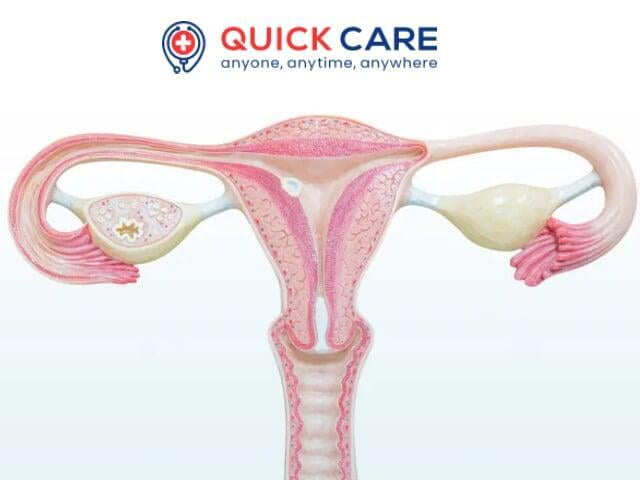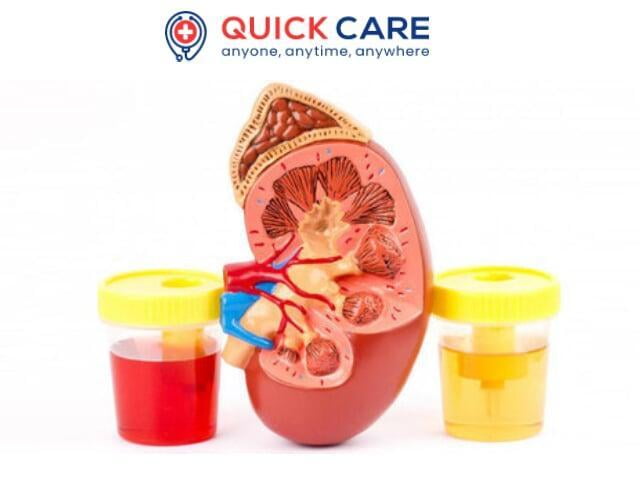Know All About Asthma Disorder & Its Risk factors
Asthma Causes, Types & Symptoms
Asthma is a recurrent disease affecting the airways. It induces wheezing, and it can make it hard to breathe. Any causes include allergen or irritant presence, viruses, exercise, mental stress, and other influences.
Asthma is an infectious condition of the airways of the lungs. It makes breathing challenging and can make any physical exercise difficult or even hard.
According to the Centers for Disease Control and Prevention (CDC), about 25 million Americans have asthma.
It is the most prevalent chronic disease in American children: 1 child out of every 12 has asthma.
To understand asthma, you need to understand a bit of what happens when you breathe.
Normally, for any breath you take, the air travels into your nose or mouth and through your throat and airways, gradually bringing it into your lungs.
There are a lot of narrow air pathways in your lungs that help you carry oxygen from the air to your bloodstream.

Symptoms Of Asthma
Classical signs and symptoms of asthma include shortness of breath, cough (often worse at night) and wheezing (high-pitched whistling sound produced by turbulent airflow through narrow airways, typically with exhalation). Many patients also report tightness in the chest. It is important to note that these symptoms are episodic and that people with asthma can go on for a long time without any symptoms.
- Coughing, particularly at night, while laughing, or during exercise
- tightness in the chest
- shortness of breath
- difficulty talking
- anxiousness or panic
- fatigue
Popular causes for asthma symptoms include exposure to allergens (pets, dust mites, cockroaches, molds, and pollen), exercise, and viral infections. Some stimuli include intense feelings, exposure to smell, and high temperatures. Tobacco use or proximity to second-hand smoke complicates the treatment of asthma.
Many of the symptoms and manifestations of asthma are non-specific and can also be found in other conditions. Symptoms that may indicate disorders other than asthma include additional symptoms in older age, the emergence of related symptoms (such as chest pain, lightheadedness, palpitations, and fatigue) and lack of reaction to suitable asthma medications.
Physical assessment of asthma is also fully common. Occasionally, there is wheezing. In the case of an asthma exacerbation, the respiratory rate rises, the pulse rate increases, and the work of breathing increases. Individuals often use accessory muscles to breathe, and breathing sounds can be decreased.It is necessary to remember that the amount of oxygen in the blood remains normal even in the middle of a severe exacerbation of asthma. Low blood oxygen levels are also of concern for imminent respiratory failure.
- Infections of the bladder (acute cystitis). In adults, infections of the bladder usually cause burning or pain when peeling. Infants with bladder infections may have a fever, be grumpy, and have a poor diet. Older children may have fever, pain and burning while urinating, a strong urge to pee, and lower stomach pain.
- Infections of the kidney (pyelonephritis). Symptoms can include fever, chills, and discomfort in the lower back (flank).
- The stones of the Kidney. They inflict serious belly or pelvic pain.
- Cancer of the kidney. You may experience weight lack, loss of appetite, exhaustion, or pain on your side.
- Diseases of the kidney. Symptoms include fatigue, elevated blood pressure, and swelling of the body, including puffiness around the eyes.
Asthma Types
There are a number of different forms of asthma. Bronchial asthma, which affects the bronchi in the lungs, is the most common type.
Other types of asthma include infant asthma and adult-onset asthma. In adult-onset asthma, signs do not develop until at least 20 years of age.
Other specific asthma forms are listed below.
Asthma allergic (extrinsic asthma)
Allergens are causing this common form of asthma. This may include:
- Pet Dander from species such as cats and dogs
- Food
- Mold
- Pollens
- Dust
- Allergic asthma is also seasonal and it often goes hand in hand with seasonal allergies.
Non-allergic asthma (intrinsic asthma)
Air irritants not related to allergies trigger this type of asthma. These irritants may include:
- Burning of wood
- Smoke of cigarette
- Cold cold air
- The pollution of the air
- Viral Infection
- Air freshener
- Cleaning of household products
- Scented lotions
Asthma at work
Occupational asthma is a type of asthma caused by triggers in the workplace. These include the following:
- Dust
- Dyes
- Industrial Chemistry
- Animal Protein
- Latex rubber
These irritants may exist in a wide range of industries, including:
- Agriculture
- Fabrics
- Forestry
- Production
Bronchoconstriction-Induced Workout (EIB)
Exercise-induced bronchoconstriction (EIB) typically affects individuals within a few minutes of beginning exercise and up to 10-15 minutes following physical activity.
This disease has historically been known as exercise-induced asthma (EIA).
Up to 90% of those with asthma are also experienced by the EIB, but not all with the EIB may have other forms of asthma.
Night-time asthma
Symptoms escalate at night with this form of asthma.
- Burn of the heart
- pet dander
- Dust mite
The body’s normal sleep cycle can also cause nocturnal asthma.
Asthma Cough-variant (CVA)
Cough-variant asthma (CVA) has no classical signs of wheezing and shortness of breath. It is characterized by a recurrent, dry cough.
If not treated, CVA may lead to full-blown asthma flares that contain other more common symptoms.
Diagnosis
There is no single procedure or test that can decide if you or your child have asthma. Instead the doctor can use a number of criteria to decide whether the signs are related to asthma.
The following can help to diagnose asthma:
Past of fitness. If you have family members with respiratory issues, the risk is higher. Warn the doctor about this genetic link.
Physical inspection. Your doctor will listen to your stethoscope breathing. You may also be given a skin exam to screen for symptoms of an allergic reaction, such as hives or eczema. Allergies raise the chance of asthma.
Breathing checks, sir. Pulmonary function measures (PFTs) assess the flow of oxygen into and out of the lungs. For the most popular test, spirometry, you are breathing into a tube that tests the speed of the air.
Doctors normally do not administer respiratory checks in children under 5 years of age because it is impossible to obtain correct readings.
Instead they can prescribe asthma medication to your child and wait to see if the symptoms will change. If they do, your child is likely to have asthma.
Your doctor can recommend bronchodilator or other asthma medicine for adults if the results of the tests suggest asthma.
If symptoms change with the use of this drug, your doctor can continue to treat your condition as an asthma
Consult QuickMDCare Doctors For Any Urgent Care service. Book Appointment with specialist doctors and get resolve your problem.
Find me here
Categories
Recent Posts
-

How Often Should You Have a Well Child Exam?
-

What is Ankylosing Spondylitis Disease ? What are its causes?
-

What is Appendicitis Problem ? Causes, Diagnosis
-

What is Amenorrhea Problem? Its Cause & Diagnosis
-

Know everything about Amyloidosis Disorder
-

Get Complete info on Blood in Urine (Hematuria) Disease